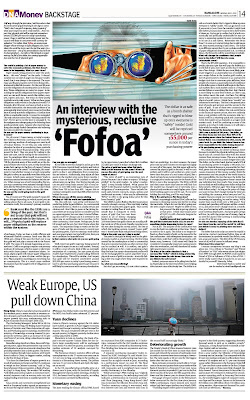
That picture is not really Jeff and Blondie. It is Jeff and Jordan from Big Brother, and yes, I am a BB fan!
Blondie petitioned me for this open forum after one of Jeff's comments quoting me. I agreed, so here you go.
_________
AdvocatusDiaboli wrote: "Blah blah blah the crazy GATA/FG assumption is somehow blah blah blah."
_________
Jeff responded: "Only a fool would lump GATA and the hard money crowd with FOFOA:
FOFOA (from Unambiguous Wealth 2): One of the biggest struggles I observe in newish visitors to my blog is that they instinctively try to reconcile everything they learned from the hard money camp—ZH and GATA being two bright stars there—with what they read here. Their effort inevitably leads to contradictions that cannot be resolved. And because ZH, GATA and the rest of the hard money camp is so much more ubiquitous than my little blog, they win by default in minds that are unable to think for themselves.
Here are a couple of the irreconcilable concepts found on this blog that noobs must either reject or ignore in order to hang on to their ZH/GATA CB thesis.
1. Remember when Aristotle wrote this? "In working on this project, I was personally shocked when I discovered that we absolutely NEEDED paper currency in order to set Gold free. In the perfect world you lapse into in your comments, everything you say is well and good. We don't live in that world, however. My biggest challenge in piecing together my proffered solution was to accept what this real world had to offer and avoid foisting my own preferences onto the world like a square peg in a round hole."
Have you ever seen anyone in the hard money camp write anything like this? Or can you imagine them ever doing so? Yet this is one of the core fundamentals necessary to understanding Freegold.
2. And FOA wrote this: "Several years ago, many gold bugs and gold advocates missed the path as the trail turned." "Yes, the war now is between the Euro and the dollar! The Washington Agreement [a Central Bank agreement] placed gold 'on the road to high prices'." "The war between gold and the dollar has been over for a while now… Leaving gold bugs with a lot of questions that ask why this: both systems will strive for a higher currency price for gold; one doing it because they have to; the other doing it because they want to! The casualty on this battlefield will be the world gold market as we know it. A market caught between how Western perception thinks gold's price should be "discovered" and at what price level trading in physical gold craters the entire paper structure… This paper gold market will be cashed out at prices far below real bullion trading so as to inflate further the books of the Bullion Banks,,,,,, not destroy them. At least this is how the US side will proceed."
Again, have you ever seen anyone at GATA or ZH write anything like this? Or can you imagine them ever doing so?
First let me state that Zero Hedge and GATA both provide a great service and they both do fantastic work, ZH comments section notwithstanding. It is their underlying thesis about fiat currencies and central banks in general that I have a problem with. And this is not a problem with only ZH and GATA, it is a problem with the entire hard money camp.
Their foundational thesis is that fiat currencies and the CBs that manage them are the most fundamental flaw in today's system from which all other problems flow. This directly conflicts with my thesis that using the same medium in both the primary and secondary monetary roles is the fundamental flaw from which all other problems flow. My thesis applies to both hard and easy money systems. Their thesis points to the CBs as the bad guys. My thesis holds up a mirror and says, "We have met the enemy, and it is us."
_________
Blondie petitioned: "Good one Jeff,
That FOFOA quote should be a stand-alone post on this blog, just so it can be linked to regularly. The difference in thesis really is as simple as that comment states: all our monetary problems (and the problems that those problems then cause) all stem from the single act of using the medium of exchange as a store of value. Period."
_________






